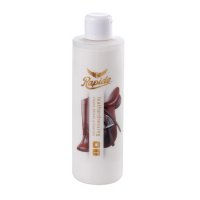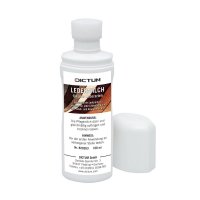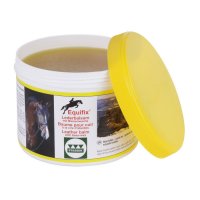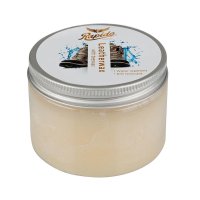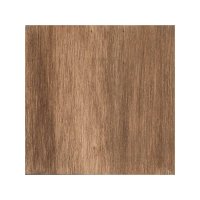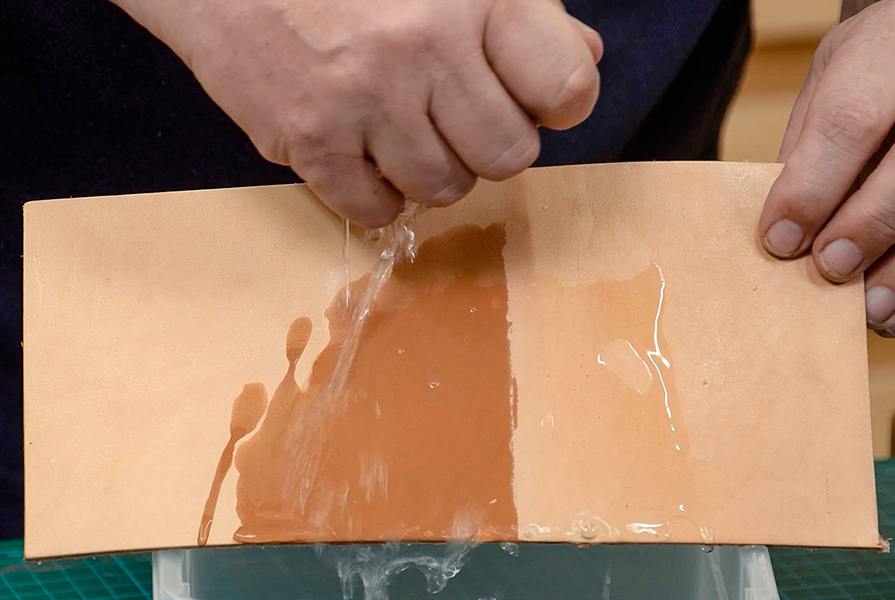
You've crafted a knife sheath, an elegant leather belt, or sewn a beautiful leather bag, and suddenly discover a stain on the leather. Now you're in need of good advice. Can the stain simply be wiped away? Can a solvent be used on leather, or will it damage the surface? Is there a miracle cure for leather stains? If you can answer the following questions, you have a good chance of getting your leather project clean again.
How old is the stain?
The most crucial factor in combating stains on leather is time. The earlier you discover a stain and the quicker you attempt to remove it, the more likely you are to succeed. The longer the substance has time to soak into the leather, the more challenging it is to remove the stain. Once a stain has penetrated into the leather overnight, you hardly stand a chance with household remedies.
How was the leather tanned and pre-treated?
Another factor is the leather itself or its surface treatment. Your best chances of removing the stain are with chrome-tanned leather, as it repels water and most colours and stains. However, this type of leather is primarily used in the industrial sector; for handicrafts and hobbies we usually use vegetable-tanned leather, which can absorb water. Here, you should ascertain whether the leather surface has been pre-treated or not. Pigmented leather, whose surface has, for example, been treated with wax, resists stains for longer than raw pull-up leather.
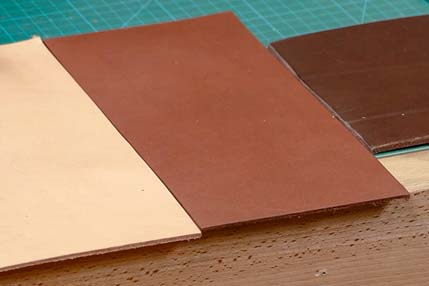
Raw pull-up leather (left) is more susceptible to stains than pigmented leather (middle and right).
How should you tackle water stains?
When leather gets partially wet, visible salt or lime deposits often form at the edges. Light water stains usually disappear by applying a bit of leather care product, such as Rapide Leather Dressing. If the stains are more pronounced and larger, you can completely soak the leather object once and then dry it slowly and gently (not near a heater!) and then treat it with a deep-acting leather care product such as Leather Milk.
How do I remove oil and grease stains from leather?
Small stains caused by clean oil or grease can often be ignored. The oil will absorb into the leather, and the stain will fade over time. The same applies to grease stains (grease is essentially also oil, but in a different state of matter). For larger stains, you can try to draw the excess oil out of the leather using rags or sawdust over a longer period of time. Then, clean the leather with Leather Soap.
How do I safely remove light stains from leather?
Light stains from handling, for example dust or pencil marks, can be easily removed using a clean eraser such as those used in technical drawing. Clean the eraser beforehand and then simply rub the stains off with little pressure. Rough spots and small pressure marks will disappear if you treat the leather with some leather care, e.g. Equifix Leather Balm.
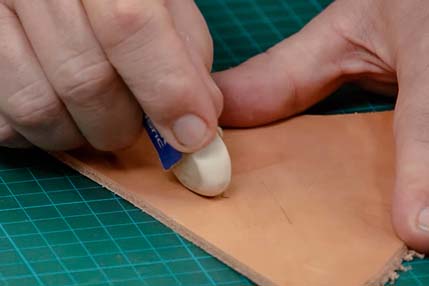
Quick solution for simple dirt: an eraser
How do I remove stubborn stains from leather?
Stubborn stains are significantly more challenging to remove and carry a greater risk of damaging the surface. Again, the factor of time plays a crucial role. Take action swiftly! A simple and quick method involves transparent adhesive tape. Place a strip of tape loosely over the stain and press only the area of the stain using a biro. A biro has the advantage of making it easier to see which areas you have already pressed. Then swiftly peel off the tape in one go. Parts of the stain or perhaps the entire stain will stick to the adhesive film. You can repeat the process to improve the result. However, this can slightly roughen the leather surface. Try to smooth the rough spots again by polishing, e.g. with Rapide Leather Wax. But polish the entire surface to ensure a uniform shine.
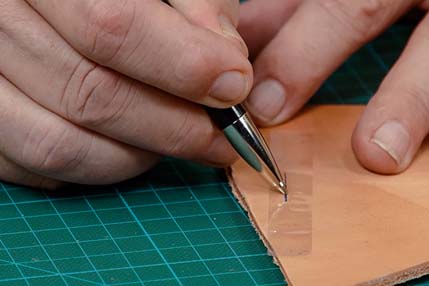
A simple piece of tape can be the saviour in case of leather stains
On pigmented leather, whose surface has been treated with wax, paint, varnish, or similar, you can also try using cleaning agents or solvents (do not use acetone, as it dissolves paints and finishes). However, be cautious – the more aggressive the cleaning agent, the more the leather surface will be affected. It's best to test the effect of the cleaner on a leather scrap or an inconspicuous area.
What if the stain doesn't disappear?
Determine the composition of the stain and dye the affected leather part completely with it. This will give your leather piece a completely different colour, but the stain will no longer be noticeable. In such cases, you can also dye your object, which usually works better with darker shades than with lighter ones. DICTUM Spirit Stains, for example, are ideal for dyeing vegetable-tanned leather.
If possible, we recommend trying all the mentioned methods on a scrap piece of the same leather or an inconspicuous area before proceeding. However, don't take too much time for this experimentation, as the longer you wait, the more the stain can penetrate the leather.

